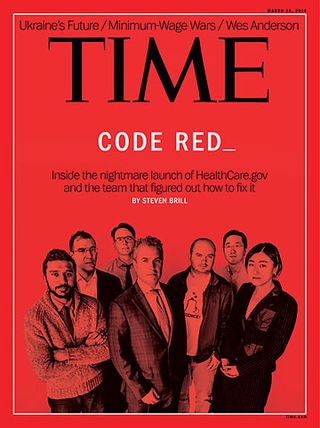 In last weeks edition I described some of the challenges, chronicled in a recent Time Magazine article, on the healthcare.gov website's initial issues. It’s a compelling story, that when dissected, leaves us all with reminders of the differences between how projects can go wrong and what can be done to right them.
In last weeks edition I described some of the challenges, chronicled in a recent Time Magazine article, on the healthcare.gov website's initial issues. It’s a compelling story, that when dissected, leaves us all with reminders of the differences between how projects can go wrong and what can be done to right them.
I previously listed three ingredients (principles) that when missing in any worthy endeavor will lead to failure; but conversely, when done well can lead to a successful execution. I also promised to draw parallels to HiringCenter successes.
Last weeks edition described the first and most important principle:
Metric Driven Leadership to Oversee and Drive the Effort
The second ingredient is:
A Central Dashboard to Monitor, Measure and Improve each Important Metric.
Quoting again from the Time magazine article:
“One of the things that shocked Burt and Park's team most (the healthcare.com rescue team)–'among many jaw-dropping aspects of what we found,' as one put it–'was that the people running healthcare.gov had no "dashboard," no quick way for engineers to measure what was going on at the website, such as how many people were using it, what the response times were for various click-throughs and where traffic was getting tied up.' So late into the night of Oct. 18, Burt and the others spent about five hours coding and putting up a dashboard.”
Can you imagine this? You have developed one of the largest scaled projects known to developed countries, a system that will draw incredible scrutiny, and you have no way to monitor, measure or improve anything. No idea what is wrong or how to fix it.
One of the first things we did, at Tidemark, as we were developing HiringCenter, was to create a dashboard. This allowed our clients (and us) to constantly monitor progress among the many tasks that must be performed with each candidate within the massive pipeline.
Those of our clients who practice ingredient one (metric driven leadership to oversee and drive the effort), seem to naturally utilize principle two exemplified by the HiringCenter Dashboard. Conversely those who don’t have ingredient one typically abandon the Dashboard. You can probably guess what results appear when these essential pieces are lacking. Sooner or later someone says… “this isn’t working."
Which brings us to the third ingredient:
A Sense of Urgency
According to TIME, one of the technology consultants (Abbott) who had worked on the rescue site said:
“To this day he cannot figure out who was supposed to have been in charge of the healthcare.gov launch. Instead he saw multiple contractors bickering with one another and no one taking ownership for anything. Someone would have to be put in charge, he told Zients. Beyond that, Abbott recalls, "there was a total lack of urgency" despite the fact that the website was becoming a national joke and crippling the Obama presidency."
TIME then goes on to describe the rescue teams mentality:
"We need to stay focused on the most urgent issues, The stand-up culture–identify problem, solve problem, try again–was typical of the rescue squad's ethic."
What was the eventual result of the rescue squads overhaul of the website?
“On Sunday, Dec. 1, Zients issued a public report card showing the website's turnaround. A series of hardware upgrades had dramatically increased capacity; the system was now able to handle at least 50,000 simultaneous users and probably more. There had been more than 400 bug fixes. Uptimes had gone from an abysmal 43% at the beginning of November to 95%. And Kim and her team had knocked the error rate from 6% down to 0.5%. Average response time–once a ridiculous eight seconds per page–was down to 0.343 seconds.”
Impressive isn’t it?
Assessing the issues, solutions and steps involved in this example, we at Tidemark have considered requiring new to HiringCenter clients to agree to use only the "best practices" established by us over the last 9 years and screen out those who don’t agree. So far we haven’t done this. What do you think? Would this be helpful?
For those of you who practice the principals listed above throughout every facet of HiringCenter we thank you. You make us look good, and it is our hope that we improve the efficiency, predictability and reliability of your new agent recruiting.
 Editor's Note: This article was written by Dr. David Mashburn. Dave is a Clinical and Consulting Psychologist, a Partner at Tidemark, Inc. and a regular contributor to WorkPuzzle.
Editor's Note: This article was written by Dr. David Mashburn. Dave is a Clinical and Consulting Psychologist, a Partner at Tidemark, Inc. and a regular contributor to WorkPuzzle.

